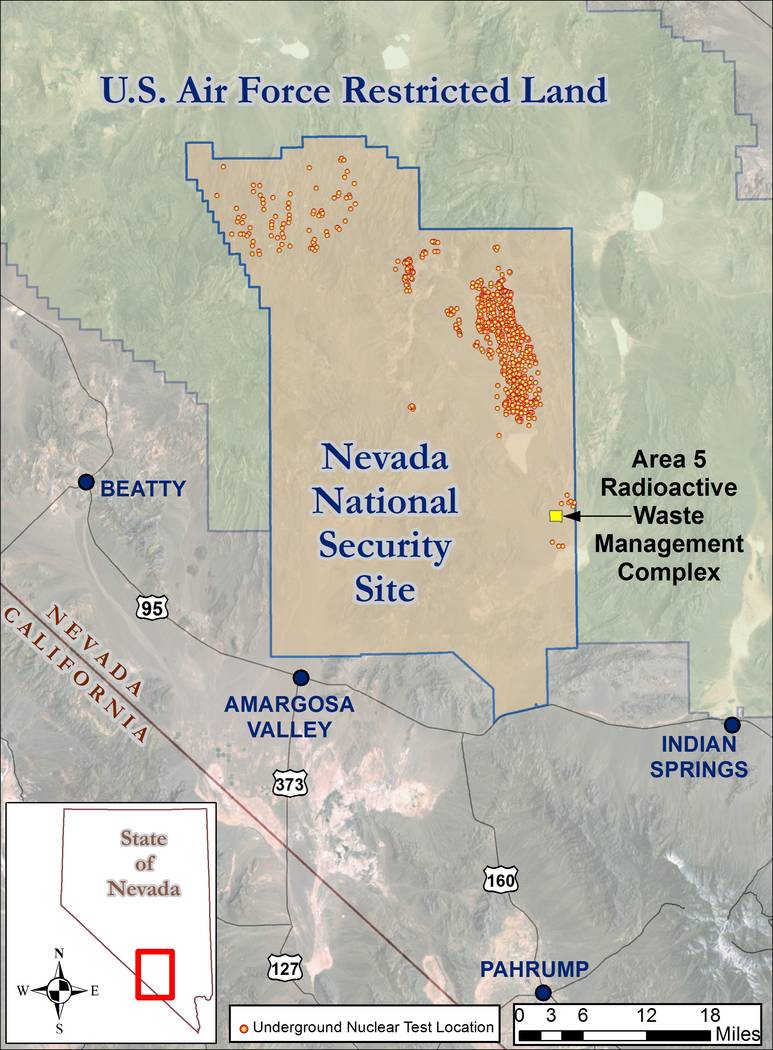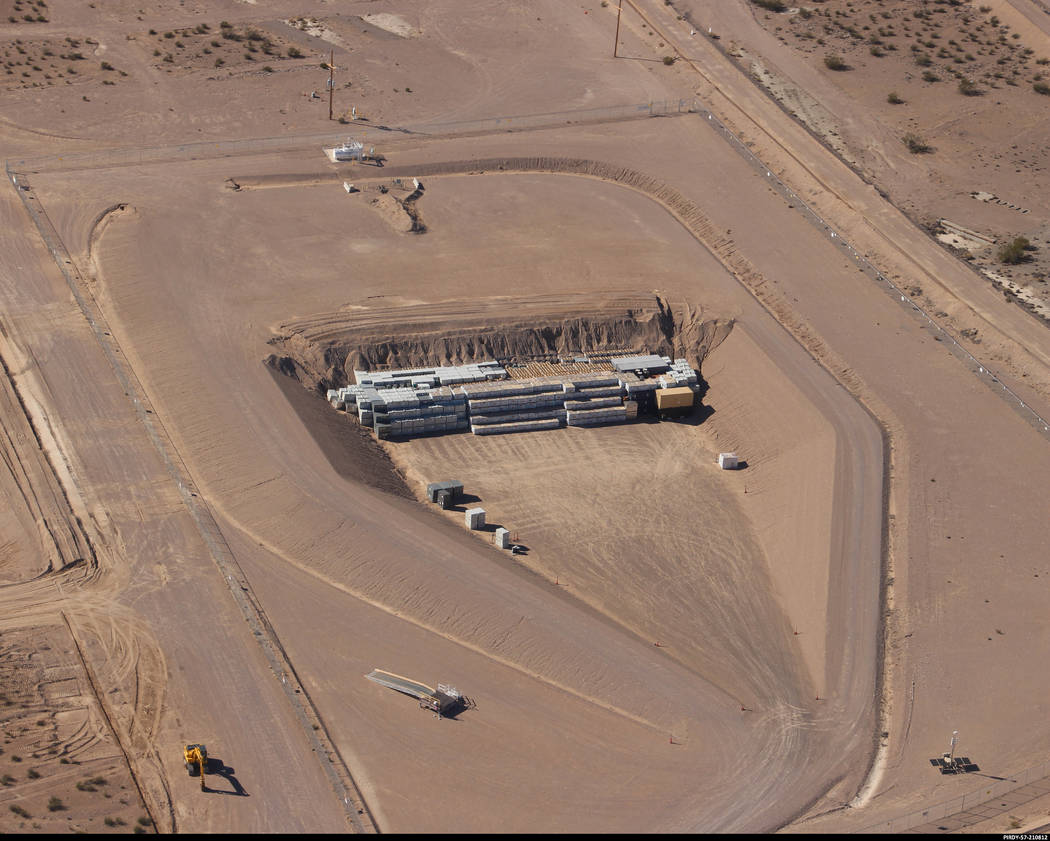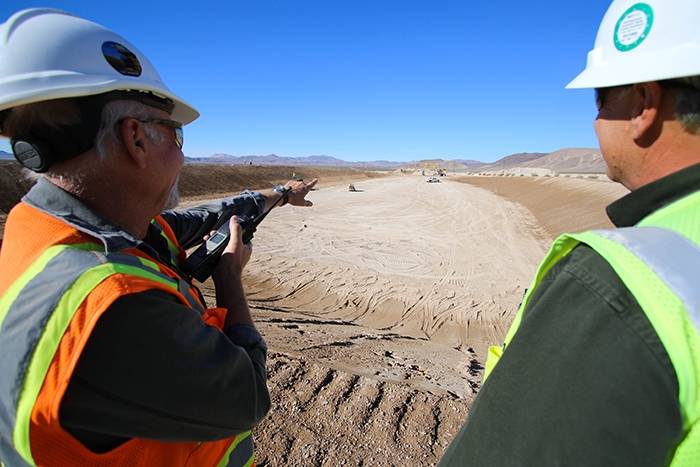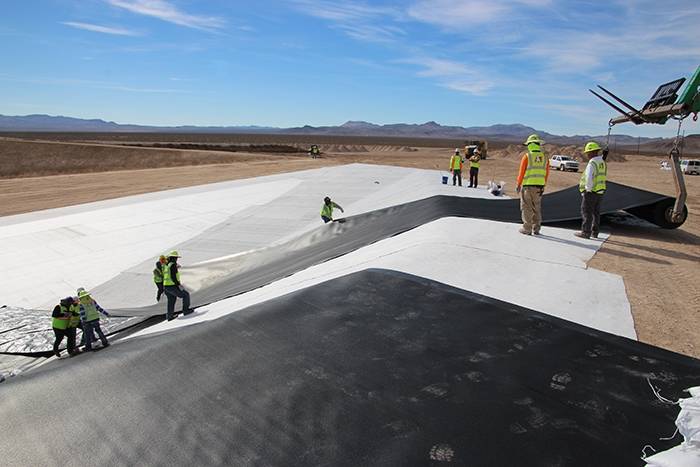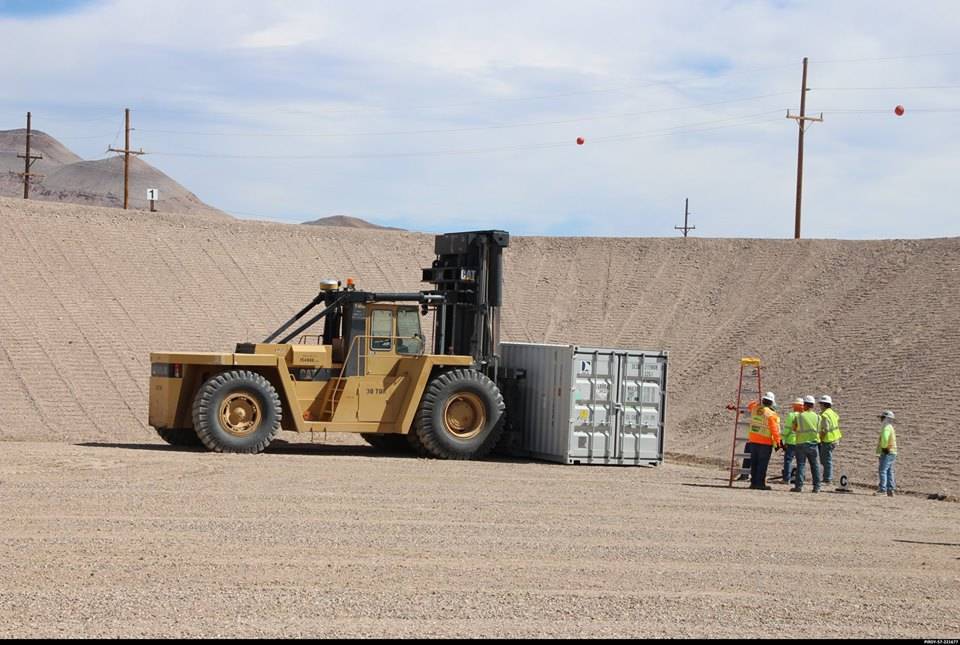Waste disposal cell completed at Nevada National Security Site
The Nevada National Security Site has a new mixed low-level waste disposal cell in place. The site accepted its first shipment of waste at the end of August.
The Office of Environmental Management, an office of the U.S. Department of Energy, announced the completion of the cell in Area 5 of the security site, formerly the Nevada Test Site, in March 2018. The new cell has a capacity of 37,000 cubic meters (over 1.3 million cubic feet).
The security site reported on its Facebook page that it accepted the first waste package on Aug. 27 at the new cell.
“The cell will play a pivotal role in the cleanup of historic nuclear weapons sites in Nevada and across the United States,” the security site stated on its Facebook page.
The cell is at the Radioactive Waste Management Complex in Area 5 of the security site, which sits in Nye County.
The 20-foot-deep cell contains a double liner, the release stated.
The release explained that an upper layer captures and moves any rain collected into a “sump.” From there, the water is pumped into a tank. A lower or secondary layer serves as a leak detection system, collecting any water that the upper layer doesn’t catch.
A modified permit for construction of the cell was issued in July 2017 by the Nevada Division of Environmental Protection. No public protests were received on the draft permit, according to a news release from the Office of Environmental Management.
The Energy Department submitted a permit modification request to the state of Nevada for construction of the cell in 2016.
According to an Aug. 25, 2017 article in the Pahrump Valley Times, an existing cell at that time was projected to reach its capacity in mid-2018. That existing cell opened in 2011 after the state of Nevada issued a permit for 900,000 cubic feet of waste, the article stated.
The U.S. Department of Energy Office of Environmental Management Nevada Program worked closely with National Nuclear Security Administration’s Nevada field office and the state of Nevada through a two-year-long process in getting a permit to construct the cell.
The modified Resource Conservation and Recovery Act permit was issued by the state of Nevada.
The Nevada Division of Environmental Protection is the state agency responsible for overseeing activities related to Resource Conservation and Recovery Act as well as issuing permits.
According to a news release, the Resource Conservation and Recovery Act process involved the review of several engineering designs, a permit application of more than 2,000 pages and a public meeting, which was all coordinated by the Nevada Division of Environmental Protection.
That state division “provided comments that were addressed in the permit application, which saved time and taxpayer dollars, and enhanced the quality of the permit application,” a release stated.
Testing is also part of the cell operation.
Water from both liners is regularly sampled,” according to a release. An engineered layer of soil was placed over the upper and lower liner “to ensure the liners are not compromised by the heavy weight of disposal operations…,” the release stated.
A release on the Energy Department’s website stated “a groundwater monitoring system comprised of three wells is positioned along the perimeter of the Area 5 Radioactive Waste Management Complex. The wells are sampled twice a year and no radioactive or hazardous contaminants from waste disposal operations have been detected by routine analysis.”
An additional well is planned to be installed within the next four years, according to the release.
The Energy Department also “requires additional monitoring to ensure buried waste is not creating a risk to…(the security site) workers, the public, or the environment,” a release stated.
The activities in question include monitoring direct radiation, air, soil, gas and biota. The security site is required to apply to renew the permit for the cell in 2020 and every five years going forward.
The Nye County-based security site has several requirements for mixed low-level and other radioactive waste brought to the site for disposal. These requirements include satisfying the “U.S. Environmental Protection Agency land disposal restrictions and prohibiting waste containing free liquids,” a release on the Energy Department’s website stated.
“Ensuring compliance with NNSS (the security site) Waste Acceptance Criteria contributes to the safe operation and long-term performance of the disposal facility for the protection of workers, the public, and environment,” said environmental management Nevada Program Manager Rob Boehlecke.
For more than five decades, low-level waste has been heading to the test site from energy and defense department sites for disposal from around the country, none of which has been commercial waste, according to an August 2017 article in the Pahrump Valley Times.
“The waste would come from various DOE sites across the country,” the Times’ article noted. “Among them are the Savannah River site in South Carolina, Hanford site in Washington, Oak Ridge National Laboratory in Tennessee and Idaho National Laboratory in Idaho.”
All the listed facilities had nuclear activities occurring during the height of the Cold War.
Contact reporter Jeffrey Meehan at jmeehan@pvtimes.com


